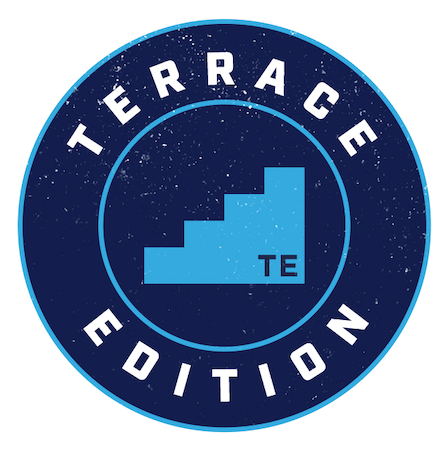Huracán's Palace

Words: Groundspotters
Images: Groundspotters
It is nothing less than a palace in middle of the city.
Home of Club Atlético Huracán, a club founded on November 1, 1908, in the South of Buenos Aires city.
It is there, more precisely in the Parque Patricios neighborhood, that the Tomás Adolfo Ducó stadium is located; one of most beautiful stadiums in Argentina due to the type of construction, appreciated by both its fans and rivals.
A jewel that many football fans and groundhoppers want to see when they travel to the capital of Argentina.
It was in 1924 that Huracán arrived on the land situated in Amancio Alcorta Av. and Luna St. The first game that was played on that new field was a 4-0 victory for `El Globo´ against Colón de Santa Fe, on August 17, 1875.
©Groundspotters'/ Terrace Edition. Club Atlético Huracán. Argentina.
They gave to that first stadium on Amancio Alcorta Av. the name of Jorge Newbery (renowned Argentine aviator, athlete, engineer, and scientist), who was honorary president of Huracán.
In 1941 the club decided to start the construction process of a sought-after cement stadium. The work took almost six years and was completed, in part thanks to the collaboration with materials and labour by fans, members and Parque Patricios neighbors, a place with working class tradition.
On September 7, 1947, in front of more than 80,000 people, Huracán reopened the doors of its stadium with a victory against Boca Juniors in an intense game that ended 4-3.
In 1967, more precisely on September 23, the stadium´s name was changed and began to be called Tomás Adolfo Ducó. A lieutenant colonel considered one of most important Presidents in Huracán´s history and a big promoter of the stadium construction works.
In 1977, renovation works were carried out in the stadium, mainly in the Alcorta stand, in which luxury boxes and new cabins for media were built, with greater comfort and a better location.
On November 29, 2007, the Tomás A. Ducó stadium was declared as a Historical Heritage and Defence Structure by Buenos Aires City Legislature.
©Groundspotters'/ Terrace Edition. Club Atlético Huracán. Argentina.
Huracán´s stadium is not only a sports icon of the city, in addition, massive and historic concerts by cult Argentine rock bands such as Patricio Rey y sus Redonditos de Ricota or La Renga have been held there.
Since 1960, Ducó’s facilities have been used as a location for different films, but one of the main reasons of pride for `Quemeros´ people is that it is the first Argentine stadium and the second in the world to appear in an Oscar award winning film.
Huracán’s home was one of the locations of the film El Secreto De Sus Ojos (The Secret in their Eyes) which received the award for Best Foreign Film in 2010.
Various advertisements and even a Netflix series, Puerta, were also filmed there.
At the Miravé stand, you can share a seat with Ringo Bonavena´s statue, renowned Argentine boxer and big Huracán fan, while appreciating the view of the pitch that icons in football history such as Alfredo Di Stéfano, Pelé, Diego Maradona and Lionel Messi once played on.
©Groundspotters'/ Terrace Edition. Club Atlético Huracán. Argentina.
Indeed, in November 2018, the Argentine national team held a public training session at the Tomás A. Ducó.
Beyond big names, El Palacio is admired for its attractive architectural style that combines art-deco and rationalism. Its majestic marble main entrance is reminiscent of Arsenal’s Highbury.
The cement seats in the Alcorta stand are also notable and the ground is famous for having large terraces that offer an excellent view from any point.
Its majestic tower looms over everything, an unmistakable symbol of the club and a Parque Patricios´ icon.
There are probably not many who would dare to argue against the fact that this is one of the most beautiful stadia in Argentine football.
Tomás Adolfo Ducó, the palace in the middle of the city.
©Groundspotters'/ Terrace Edition. Club Atlético Huracán. Argentina.
©Groundspotters'/ Terrace Edition. Club Atlético Huracán. Argentina.
©Groundspotters'/ Terrace Edition. Club Atlético Huracán. Argentina.
©Groundspotters'/ Terrace Edition. Club Atlético Huracán. Argentina.
©Groundspotters'/ Terrace Edition. Club Atlético Huracán. Argentina.
©Groundspotters'/ Terrace Edition. Club Atlético Huracán. Argentina.
©Groundspotters'/ Terrace Edition. Club Atlético Huracán. Argentina.
©Groundspotters'/ Terrace Edition. Club Atlético Huracán. Argentina.
©Groundspotters'/ Terrace Edition. Club Atlético Huracán. Argentina.
©Groundspotters'/ Terrace Edition. Club Atlético Huracán. Argentina.
©Groundspotters'/ Terrace Edition. Club Atlético Huracán. Argentina.
You can find Groundspotters on Twitter: @groundspotters



















